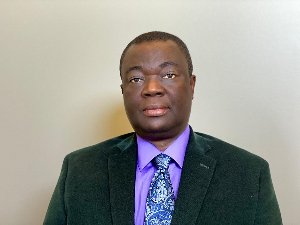Accra, Sept. 7, GNA - Ghana would once more be lucky to see a partial eclipse due in West Africa on September 22, 2006 the Centre for Remote Sensing and Geographical Information Services (CERSGIS) announced at a press conference on Thursday.
Dr E. Amamoo-Otchere, Executive Director of CERSGIS, said it would be an annular and partial eclipse and its path of totality would occur on mid-Atlantic about 3,500 to 4,000 kilometres off the West African coast.
An annular eclipse does not produce total obscurity of the sun by the moon so the totality of darkness of such an eclipse is not absolute like the total solar eclipse.
Dr Amamoo-Otchere said: "An annular eclipse is when the moon is at play with the sun in relation to one's position." Such an eclipse could occur anytime.
Ghana experienced a total eclipse of the sun on March 29 2006. Ghana and the whole of West Africa would therefore see the September 22 2006 event partially, he said, emphasizing that the moon's shadow would not reach the surface of the earth hence the partial darkness.
"Outside the umbra (shadow projected by the moon) and antumbra (opposite umbra) is a very broad zone, thousand of kilometres which is the penumbra," he said and noted that Ghana and other West African countries would be in the penumbra.
He said people, who looked up between 0930 and 1200 hours, would see the moon passing across the surface of the sun. He added that CERSGIS was not certain about the path but the whole country might be lucky to experience it.
Dr Amamoo-Otchere said viewers along the coast would, however, have the opportunity to see the darkening surface off in the oceanic atmosphere.
He cautioned that annular eclipses were also dangerous to watch with the naked eye and urged the public interested in viewing the phenomenon to take the same precautions needed for safety viewing of a total eclipse.
"Parents and teachers must be particularly concerned about children who are eager to watch and ensure that they use the eclipse goggles," he advised.
The annular eclipse, which is expected to last for about seven minutes and nine seconds, would be seen much larger in South America, the Eastern Caribbean and Antarctica. Dr Amamoo-Otchere said CERSGIS was particularly interested in the celestial phenomenon because it helped in building space technology. "Ghana has benefited from space technology in many ways," he said.
General News of Thursday, 7 September 2006
Source: GNA












